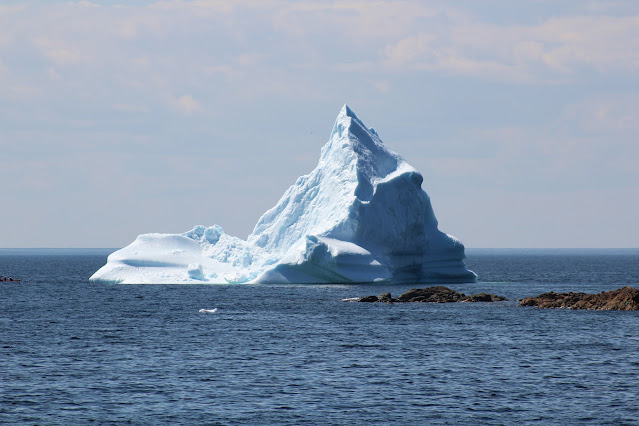Chasing Iceburgs in Newfoundland, Canada
There’s something kind of magical about standing on solid ground, looking out at the ocean, and seeing a massive chunk of ancient ice just floating by like it has nowhere special to be.
Icebergs are one of Newfoundland’s most iconic natural sights, especially along the province’s northern and eastern coasts. These towering masses of ice originate from glaciers in Greenland, breaking off and drifting south along the Atlantic in a route known as Iceberg Alley. Many of the icebergs that appear off Newfoundland’s shores are over 10,000 years old and have traveled for years before reaching Canadian waters. Their size and shape vary dramatically—some resemble jagged mountain peaks, while others are rounded and sculpted by wind and waves.
The best time to view icebergs in Newfoundland is typically from April to early July, with June usually offering a good balance of visibility and mild weather. Only a small portion of each iceberg is visible above the surface—about 10%—with the majority hidden beneath the water. This gives them an almost otherworldly presence as they drift silently offshore. For those hoping to catch a glimpse, several coastal towns like Twillingate, St. Anthony, and Bonavista offer excellent vantage points, and there are real-time iceberg tracking tools available to help plan sightings.
Both times we went to see the icebergs, we ended up spending a good amount of time in Twillingate. It’s a picturesque little town right on the Atlantic, with a strong fishing history and beautiful coastal views. It’s also one of the best places to watch the icebergs drift by.
We enjoyed sitting up by the lighthouse, staring out into the ocean at the massive frozen giants. Somehow, time seemed to stand still. It was so peaceful, as if we were the only ones there. Both times we were fortunate enough to have the added bonus of watching the whales feeding in the water below.
On our first trip to Twillingate, we took a boat tour—and getting close to the icebergs really puts their size into perspective. Some of them had these beautiful turquoise streaks running through them. That happens when the iceberg was still part of the glacier and meltwater seeped into cracks, then froze again. Because that water didn’t trap any air, unlike the rest of the glacier ice made from packed snow, it turned into crystal-clear, bright blue ice.
I will definitely be going back in the future.




.jpeg)












How magical to see icebergs AND whales!
ReplyDeleteThose icebergs look unreal! What an amazing experience
ReplyDeleteI can't believe, as a Canadian, Nfld is one of the few provinces I have yet to visit. I've heard nothing but wonderful things to see and do. Not to mention the friendliness of the people. Thank you for inspiring me to prioritize a visit here.
ReplyDeleteWhat a cool trip!
ReplyDeleteThanks for this interesting post on icebergs and Newfoundland, Barbara. What awesome sites. I got as far as Nova Scotia and PEI but didn’t get to Newfoundland. I admire your travel spirits.
ReplyDeleteIcebergs in Newfoundland look absolutely epic! I'd love to visit one day and see them with my own eyes. I’ve only seen icebergs in Iceland, but the landscape was so different - so it would be amazing to experience them in Canada too.
ReplyDelete